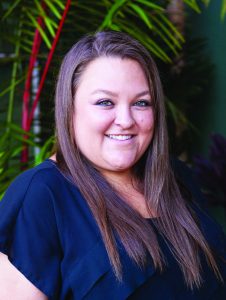 An interview with Tricia Medeiros, Chief Operating Officer of The Plaza Assisted Living
An interview with Tricia Medeiros, Chief Operating Officer of The Plaza Assisted Living
What brought you into the caregiving field?
I took a job as a business office manager at an assisted living community while I was in college. My major was accounting and I fully intended to become a CPA. But by the time I graduated, I knew I wanted to be an administrator at an assisted living community. I felt good about what we did and loved the residents. There was no way I could leave.
Has the perspective on residing in an assisted living community changed over the years?
There was a time when there was a stigma attached to moving into an assisted living community. Residents were labeled as “old;” adult “drop-off,” similar to a childcare facility, was implied. Now, the derogatory labels are far from true. Moving into a senior community is now looked at as a way to live independently, not depending solely on family or others. The lifestyle is an opportunity to enjoy yourself and not be burdened with household chores. It is a much favored option these days.
What are the most common reasons a senior moves or is moved to assisted living?
Assisted living is the perfect combination of living in an independent apartment while receiving the assistance to allow that to happen. Assisted living also provides an opportunity to socialize with peers. Residents can have dinner guests or enjoy a cup of coffee with a friend any time. Peers are readily available for exercising, playing mahjong or creating arts and crafts projects together.
Do residents move to assisted on their own or are they placed there by their families?
Ultimately, everyone moving into assisted living agrees with the transition. Oftentimes, adult children help and research options, but in the final analysis, every resident has to make the choice to move in or not. The only exception is residents with memory issues. In those cases, a family member or loved one will need to facilitate the process.
What challenges do facilities face?
The most recent challenge for assisted living is COVID-19. The pandemic underscored the vulnerability of the senior population and the importance
of the role an assisted living facility must provide to ensure the safely of its residents.
Most assisted living communities moved quickly and put protocols in place to protect residents. Staff was screened and equipped with personal protective equipment (PPE). Residents were being carefully monitored.
It is important that residents, families and team members know that most assisted living facilities have become a safer environment than some of the alternatives at home.
What precautions should assisted living facilities put in place to protect their kūpuna?
Senior living facilities should protect their kūpuna during the pandemic. This is certainly a time to put safety first. They have the responsibility of screening everyone that enters the community to ensure that no one is sick, has a fever, recently traveled or has been in contact with anyone with COVID-19. Steps should be taken to include the resident in a cohort to minimize spreading of the virus. The facility must also be equipped in case the virus does enter the community. The facility must have plans already in place in order to care for infected residents and minimize the spread.
How is the industry preparing for the future?
The industry is preparing for the “new norm.” The previous focus on hospitality must shift to safety. Protocols and screening will remain in place for visitors and staff alike. Safety will be prioritized and assisted living facilities will continue to be the safest places for seniors to live.


Leave a Reply